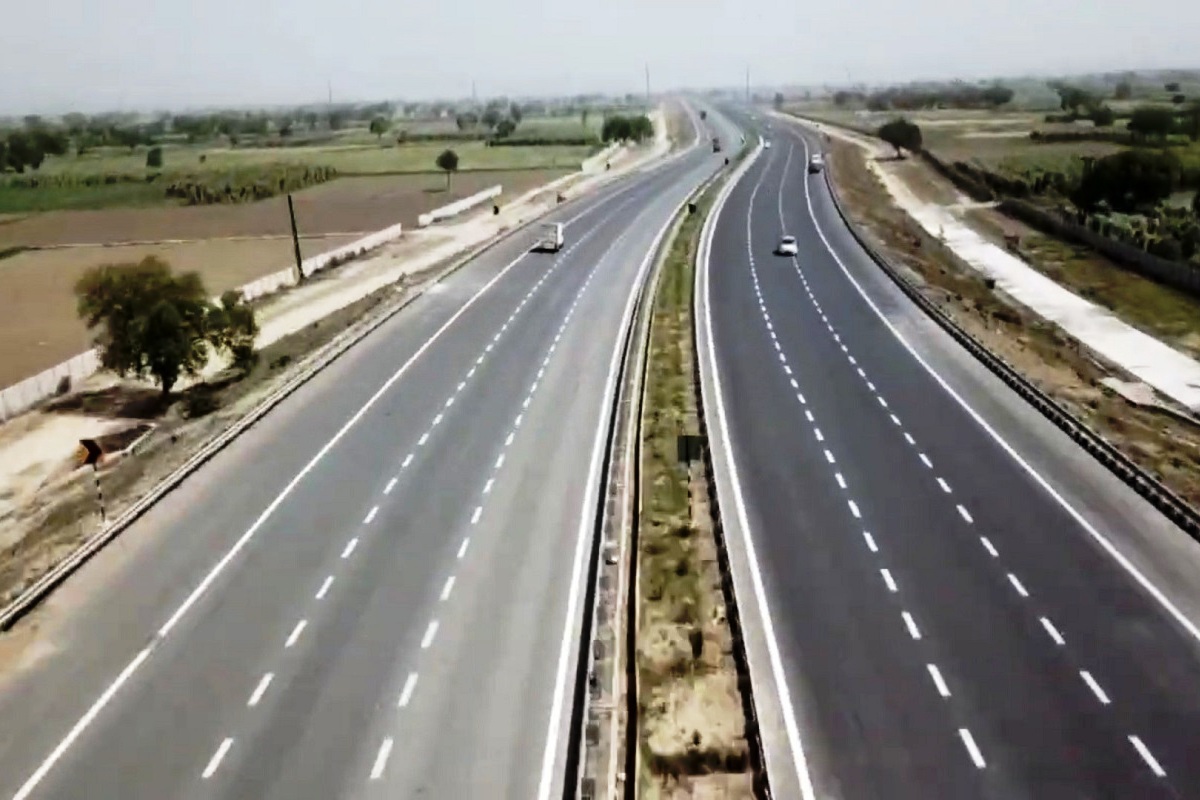Major fire at Narela polythene factory; luckily no one hurt
According to Delhi Fire Services, at around 6:35 am, a fire call was received regarding a fire in a factory in Narela.
Entry to the premium coach will be accessible only through a premium lounge made at the platform level. Equipped with comfortable cushioned seats, it will have the facility of a vending machine from where snacks or drinks can be bought, the spokesperson said.

(Image: Twitter/@sssaaagar)
The 17-km priority section of the Delhi-Ghaziabad-Meerut Regional Rapid Transit System Corridor which will be inaugurated by Prime Minister Narendra Modi on Friday will connect Sahibabad to ‘Duhai Depot’ with stations at Ghaziabad, Guldhar and Duhai.
The foundation stone for the Delhi-Ghaziabad-Meerut corridor was laid by the prime minister on March 8, 2019.
Modi will inaugurate the priority section of the Delhi-Ghaziabad-Meerut RRTS Corridor at Sahibabad RapidX Station in Uttar Pradesh on Friday. He will also flag off the RapidX train connecting Sahibabad to Duhai Depot, marking the launch of RRTS in India.
Advertisement
“India’s first Regional Rail, RAPIDX, is a one-of-a-kind transit system being implemented for regional commutes. Its first corridor is 82 km long and under construction between Delhi-Ghaziabad-Meerut,” a spokesperson of the National Capital Region Transport Corporation (NCRTC) said.
“The 17 km long section between Sahibabad and Duhai Depot is the priority section, which will be started for passenger operation from October 21, a day after its inauguration by the prime minister. This section has five stations — Sahibabad, Ghaziabad, Guldhar, Duhai and Duhai Depot,” the spokesperson said.
With an operational speed of 160 kmph, these fully-air conditioned RAPIDX trains will have a host of commuter-centric features for a safe and comfortable regional commute like ergonomically designed 2×2 transverse seating, wide standing space, luggage racks, CCTV cameras, laptop/mobile charging facility, dynamic route maps, auto control ambient lighting system, Heating Ventilation and Air Conditioning System (HVAC) and other amenities.
The RAPIDX trains will be operational between 6 am to 11 pm.
“To begin with, a train will be available every 15 minutes, though the system can further increase the frequency on a requirement basis,” the spokesperson said.
Every RAPIDX train has six coaches with the capacity to carry about 1,700 commuters, including both seating and standing space, for the commuters. There are 72 seats available per standard coach and 62 seats in the premium coach.
One coach in every RAPIDX train is reserved for women, it is the coach next to the premium coach. Also, seats are reserved in the other coaches for the specially-abled and senior citizens.
Each RAPIDX train will also have one ‘premium coach’ with a host of additional commuter-centric features like reclining seats, coat hooks, magazine holders and footrests. The first coach moving towards Meerut from Delhi and the last coach moving towards Delhi from Meerut will be the premium coach.
Entry to the premium coach will be accessible only through a premium lounge made at the platform level. Equipped with comfortable cushioned seats, it will have the facility of a vending machine from where snacks or drinks can be bought, the spokesperson said.
In every RAPIDX train, a train attendant will be deputed who will play an important role in acquainting the commuters with the facilities available on the train and ensuring their safe and secure commute. The attendant will be stationed in the premium coach and assist the commuters in need.
Ticketing options available for commuters include paper QR code-based journey ticket, ticket vending machine, National Common Mobility Card (NCMC) Card and digital QR code-based ticket through NCRTC mobile application, ‘RAPIDX Connect’.
To facilitate smooth travel in the RAPIDX trains, a designated space for wheelchairs and stretchers has been provided in the last coach of the train.
“Multi-modal integration is the guiding principle of the RRTS project being implemented by NCRTC. To facilitate this, RRTS stations have been strategically planned in such a way that they can be built as close as possible to the existing modes of public transport,” the spokesperson said.
Eight RRTS corridors have been identified to be developed in NCR, out of which three corridors have been prioritised to be implemented in Phase-I, including Delhi – Ghaziabad – Meerut Corridor; Delhi – Gurugram – SNB – Alwar Corridor; and Delhi – Panipat Corridor.
The Delhi-Ghaziabad-Meerut RRTS being developed at a cost of more than Rs 30,000 crore will connect Delhi to Meerut in less than an hour of travel time going through the urban centres of Ghaziabad, Muradnagar, and Modinagar.
In line with PM GatiShakti National Master Plan, the RRTS network will have extensive multi-modal-integration with railway stations, metro stations and bus services. Such transformative regional mobility solutions will boost economic activity in the region; provide improved access to employment, education and healthcare opportunities; and help in significant reduction of vehicular congestion and air pollution.
Advertisement